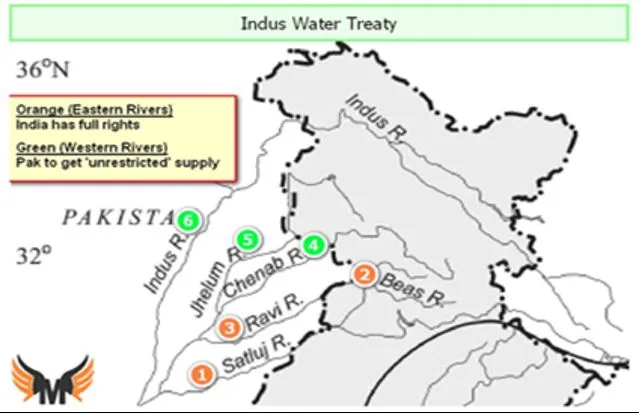

26th June 2024 (15 Topics)
Context
A large delegation of Indo-Pakistan teams on Monday flew to Jammu and Kashmir's Kishtwar district with neutral experts and started inspection of two power projects under the Indus Water Treaty (IWT).
About
- The six-decade-old treaty governs the sharing of waters of six rivers in the Indus system between the two countries.
- Main Rivers:Indus River, Jhelum, Chenab, Ravi, Beas, and Sutlej.
- The basin is mainly shared by India and Pakistanwith a small share of China and Afghanistan.
- Under the treaty signed between India and Pakistan in 1960, all the waters of
- Eastern rivers, namely Ravi, Sutlej, and Beas (Eastern Rivers) were allocated to India for exclusive use
- Western rivers- Indus, Jhelum, and Chenabwere allocated to Pakistan except for specified domestic, non-consumptive, and agricultural use permitted to India as provided in the Treaty.
- India has also been given the right to generate hydroelectricitythrough run-of-the-river (RoR)projects on the Western Rivers which, subject to specific criteria for design and operation is unrestricted.
River Indus: Geographic Location
Significance:
|
More Articles



